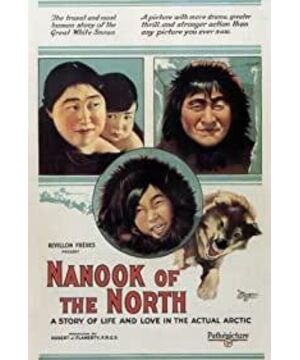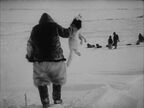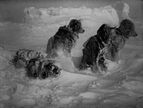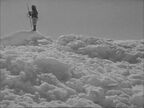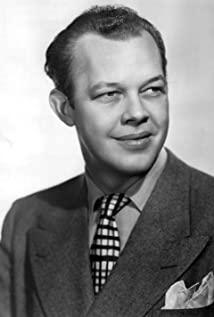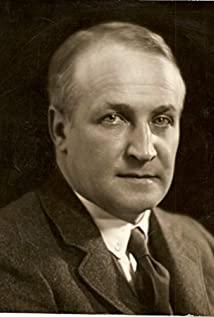In fact, I want to say that if I want to play a game of traversal, I would go back to 1920, I would rather be alone, selling newspapers "outside the line, outside the line" on the streets of Moscow in winter, and shrink under the bridge hole when it's cold, with the stamp " The tabloid of "The Mystery of the Life and Death of Russian Princess Anastasia" is used as a quilt; I don’t want to be sent to the home of the Arctic Eskimos. scary.
Because I have many terrible questions that I haven't gotten answers. There is one more "cold" challenge than the life of primitive people in the forest. Do you really have the confidence to face it? Will the stomach accustomed to cooked food adapt to raw meat? Sleeping in the ice cellar will not freeze to death? How should I take a shower? The competition for power, one day is not lucky, will men who go for food become a feast for polar bears? How to solve a woman's menstrual period? Going to the toilet is a big problem. Even if there are open-air toilets everywhere, will people with constipation freeze their buttocks if they squat outside for ten minutes? Can you really endure the fear that you might starve to death without hitting a prey for two or three days? etc. Although "Nanuk of the North" didn't answer my question, it told the truth that someone can live like that and live freely.
The documentary "Nanuk of the North" filmed in 1920 is the pioneering work of Robert Flahadi, the father of the documentary. Beyond the one-minute short film "Factory Gates" by the Lumière brothers, "Nanuk of the North" as the first complete feature-length documentary exists in the history of world cinema. Before the film was released, Vlahadi went to the North Pole to prospect for mines three times, shooting scattered pieces of material enough to be edited into an expedition documentary. As a result, the film was burned in an accident.
Vlahadi, who has accumulated experience in shooting, was sponsored by a French fur dealer to enter the Arctic again. Under the extreme cold living environment, he took 16 months of shooting and re-selected materials to complete the daily life of the Eskimo "Nanuk" family. . It was screened at the Capital Theater in New York in June 1922. It was a blockbuster with both fame and fortune. Soon afterwards, the protagonist of the documentary "Nanuk" starved to death when he was unable to hunt for food, leaving behind a sad story behind the scenes. This kind of parting not only makes Vlahadi sad, but for viewers who have watched this documentary, Nanuk's smile engraved in their minds will also reflect an unspeakable regret and sadness.
Lovely people and things have this kind of charm, can make people miss and be blessed silently. I really feel that the Nanuk family are like brilliant sunflowers, blooming in the snowy North Pole. This is the first time that a documentary has given me this feeling. Existing characters are not carriers of social events, as if they have nothing to do with the crowd. They are a kind of creature in the Arctic. People become a landscape and a representative of a kind of life group. I can bypass the proud high-level species. Definition, only paying attention to the original vitality of man, the theme of the documentary is the relationship between man and nature.
They merge with nature and become part of the jungle story. "Living" is the choice of the Creator, so "living" is similar to trees, birds, and mountains. It is the result of innocuous existence in the eyes of others, and death has also become The most natural way to return to nature. Using the hypocritical "new concept style" to describe a feeling that can only be understood, it may be empty, but this is the clearest impression I have after reading "Nanuk in the North".
The lion family that defends the crown, they are also talking and laughing in their unique language when they are enjoying the food, and occasionally talk about the more and more frantic apes, they will also have big heads, troubles, and imminent survival crisis, which is obviously related to the insecure dominance. They are related, in the animal world, the only rule of survival is the strong eating of the weak. Until the "IQ" was born, the monkeys gave up the free life of barbs on branches and wanted to evolve into technical nerds. The lion can continue to be its king of the jungle. Humans rely on science and technology to dominate the sea, land and air.
However, "Nature" is still the boss of willfulness. A gust of wind blows, and the dandelion seeds are scattered with the wind, and the buds are the floats of the married daughter. I bid farewell to one and wait for the next flowering period. Taken away by the wind, they will live elsewhere, take root, germinate and bear fruit, and then continue with another parting story left on the scape. The relationship between dandelion flower and wind reminds me of the story of man and nature.
We are wanderers, we have always been, in a hopeless savage place, people like me are pessimistic believers, constantly consuming unsustainable love and confidence, and working hard to move forward. The romantic verses swaying in the candlelight ended up being eroded by wind, rain, and lightning. Stars fell from the food chain. Before they could be seen with the eyes, they had disappeared in people's hearts without a trace. It is sad to watch human beings dance for nature and finally give the most fragile and smallest life. No matter how gorgeous the sacrificial rituals are. After seeing the scenery, the tear that cannot be dried is always on the tip of my heart.
As the sky is densely covered, human beings are dazzling stars. He is placed on the compass and is watched by the shepherd’s son of God. God only guarantees that the fraction established by humans and nature can exist in balance. You, me and him—our group want The helpless life who escaped from the huge denominator system has never returned to a peaceful place. Meteorological nature will not spoil humans. When humans think that they are safe and sound, "nature" is just sleeping. It only needs to take a deep breath, and its farce will be a tragedy for a certain group of people, perhaps for all mankind.
It can't speak ill of nature. It occasionally frightens the face, and although it leaves unquenchable lingering fears, it can't ignore its indispensable beauty and its generous gifts. My pessimistic attitude is always my own, miserable and unscrupulous. I will accept everything that is given to nature as it is. This is the resilience of life. Humans with armors, weapons and protective membranes can no longer adapt to rough environments. Just like flowers and plants in a greenhouse, comfort determines its vitality. Even if it is the same species, it seems that strong weeds are sharpened in the wind. Is irrelevant.
Nanuk, the Eskimo, is different. He is one of the rare strong grasses. He and his family are a landscape. Ninety-five years ago, there were humans who lived like that, living outside the civilized world sheltered by greenhouses. They did not envy the progress and development of human benefits, and commercial civilization did not stain their original form. The skills they master are sufficient to cope with the challenge of survival. The Arctic is their world, floating ice is their hunting place, Iglu (Igloo) is their home, sleds and ships are vehicles, and they eat raw seals, walruses and marine fish. Four-month-old children are also immeasurably hardy. Strength, "the people take food as the sky" is the whole meaning of life.
You can't help but be in awe of this incredible state of existence. Taking care of the body and soul in the most primitive way can live, multiply, and continue the civilization of ethnic minorities. This is also a special gift given to them by nature. Seeing the Nanuk family share fresh seal meat, sleeping together on Iglu’s cold bed, and then waiting for them to happily welcome the dawn of the next day. In my heart, the value of the documentary "Nanuk in the North" is fully presented. The life recorded in the most simple and vivid pictures will always shine in the long river of history.
The value of this kind of "barbaric" life image is again highlighted from the "modern man" with whom he trades. Many of the bridges, temples, city walls, roads and water channels built by the Romans more than 2,000 years ago still exist today, and modern people are still benefiting. Those "dead objects" are substitute images and treasures that witness signs of life for mankind. Nanuk, who learned primitive harpoon hunting from his father, showed his extraordinary skills in the documentary, which is also regarded as "intangible cultural heritage."
In addition, he and his family, he and his friends, under the "arrangement" of the director Vlahadi, performed all the ways of living that they had or were degrading. Many people criticized this, thinking that Robert's documentary is "not worth a penny". It is ridiculous and speechless to think about it. If you are faithful to the original state of life and faithful to the truth of the recorded event, "removed documentary", this method is really nothing to blame. The shooting technique pioneered by Robert Flahardy is a completely different concept from the posing in news reports. In the process of documentary presenting the truth, in certain scenes, "reduction" or "integration and interception" is a necessary narrative method.
The pre-arranged plot has a non-imaginary premise, which determines the narrative fluency of the documentary. In fact, the beginning of "Nanuk in the North" is full of interesting narratives, and the opening has the effect of attracting attention. A long and thin ship-shaped kayak is loaded with all the members of the family, like magic, one by one, climbing out from the top of the dock with a large cylinder mouth. The ultra-modern design of the rowing boat fully demonstrates the wisdom of the Eskimos. . Hunting for walruses, dragging seals out of snow caves, and building the bridge section of Iglu (Igloo) is a complete "science literacy" process. There is no doubt about the value and significance of this "removal".
Because the reality in a hundred years later can testify that "no picture without truth" is not just exposing lies, it is also sighing the regret that it has not kept the truth. Nanuk's desire to continue the traditional way of life will come to nothing, even if he loves to train his young son to shoot arrows, and conveys the Eskimo's hope of survival by "teaching by words and deeds". But he himself has also unknowingly changed, abandoning the traditional "harpoon" tool, and switched to a "rifle." He just failed to realize the speed of this change. In the progress and loss of assimilation, modern Eskimos will have a new Eskimo way of life.
Nowadays, igloos and igloos no longer exist. Modern Eskimos live in wooden houses with heating and stoves. Modern sewer installations, solar energy equipment, jet skis and cars are transportation tools. Dogs pulling sleds are unemployed. Of desperation. Umiak, a small boat made of seal skins, was put into the museum, fishing used a full set of modern tools, Eskimo children went to school, single warm fur clothing was replaced by colorful clothing, and moved to town. The Eskimos of Eskimos prefer cooked food, and they are immersed in commercial civilization, and there has been a gap between the rich and the poor.
In short, it is obviously not objective enough to bring modern Eskimos back to the North Pole and to reproduce the traditional Eskimo lifestyle, and special effects may be needed. This is also the special feature of Vlahadi's documentary. He recorded everything he saw at an irreversible historical fork in the road. Robert Flahardy's contributions to documentary films summarized in the encyclopedia are not exaggerated. He has always had a reciprocal relationship with the characters in the film. His shots wandered between freehand and realism, and the filming is closer to the original and simple spirit, which is his "values" of fraternity and tolerance. The non-fictional rehearsal will not be repeated here. The significance of a single lens can be greater than that of montage, which provides a basis for the "long lens theory" of the new wave.
View more about Nanook of the North reviews


